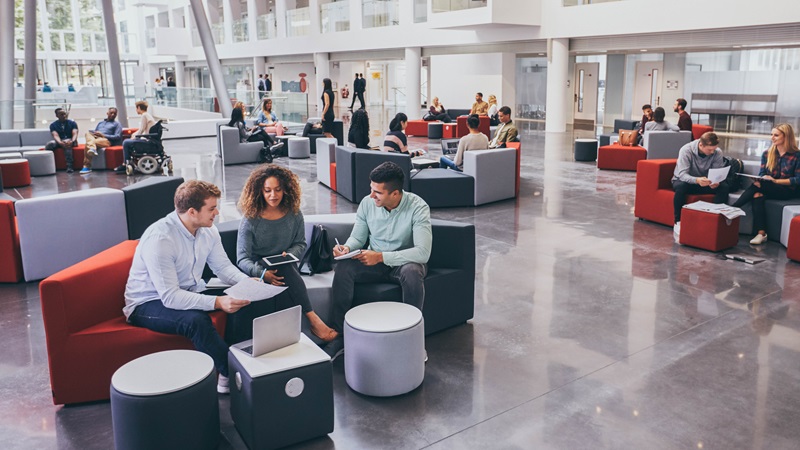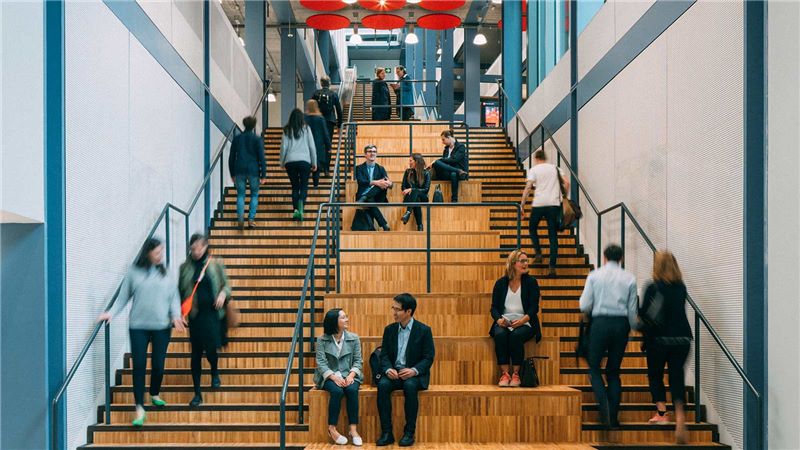Perspectives
Is workplace experience the secret to retaining great employees?
As the war for talent rumbles on, companies are looking at their employee value proposition and how their workplace design can support in attracting and retaining talent.
While company culture should not be underestimated, there is a huge opportunity for the workplace to communicate how a company values its people and for its design and layout to enhance the capabilities and overall employee experience of its workforce.Employees are the lifeblood of a company. Businesses are increasingly looking at their own employees as their internal customers, and seeing the value in creating these kind of transactional relationships with their people to retain staff and maintain performance.
A recent report shows that up to 87% of people said that having a great office makes them want to actually go to work. The research, from Instant and Area, found offices are improving, workers are happier and more productive, but only in spaces where the design, amenities available and perks on offer combine to meet employee expectations and demand.
With the rise in popularity of co-working spaces such as WeWork, the workplace is in the process of redefinition. Workplace managers need to consider that the amenities provided by the workspace are as important as the perks offered by the employer.
Workplace managers can influence so many aspects of the working environment - from workplace design to catering options - and support companies as they adapt their approach to the working environment. Organisations are creating personalised interactions through touch points, creating emotional connections and driving the engagement of individuals.
Emotions play a big part in experience design, and as happier employees are more productive employees, companies are keen to improve engagement and ensure performance.
Increasingly, businesses are partnering with studies such as the Leesman Index, to gather data that gives a clearer view of what’s important to their employees, keeping their needs a priority, and ensuring they are offering what their people want – much like with external consumers.
The generational differences in the workforce are having an impact on the workplace. We are now in a unique situation where in 2020 there will be five generations that make up the modern workforce. This increase in diversity is creating a challenging dynamic in the workplace, which requires business leaders to be increasingly more flexible in accommodating the needs of their people.
Millennials are the generation of employees with very different workforce behaviours, who are not just familiar with collaboration tools but expect the work environment to allow or even encourage them to use these tools. What motivates and incentivises new generations entering the workplace is changing all the time.
Global research shows that millennials do not feel bound to a single employer, with 90% planning to stay no longer that 5 years. As a facilities management provider, this means we need to work much harder to support our clients in retaining these people, looking at the whole employee value proposition, and how we can tailor the offering for our customers.
In response to this change in the needs of the workforce, the adoption of technological solutions is increasing across corporate real estate. Data is becoming increasingly more useful, with sensors capturing information from across the estate - which can then be used to influence property decisions.
Additionally, creating connected workspaces is supporting employees and teams as they move seamlessly about their day. With more and more businesses arming their people with mobile devices, delivering connectivity across the workspace is creating a more efficient environment, reducing the time employees are spending on keeping all their systems, calendars and devices up to date as well as supporting a more flexible working environment.
Flexibility is key in today’s workspaces – with a growing trend of remote working, companies are reacting to their team’s requests and changing the dynamic of the working day. By recognising the need for choice for all building users, the working environment can positively impact our daily working lives.
Macro has found that by working with clients to understand how their employees function best, we can make changes - big or small - to improve workplace productivity. By utilising building user studies and survey providers, we can find out directly from teams what they consider to be the most important factors, and create effective strategies to deliver positive changes.
So, what does this mean for the traditional office space, and is your workplace geared towards retaining your key people?










